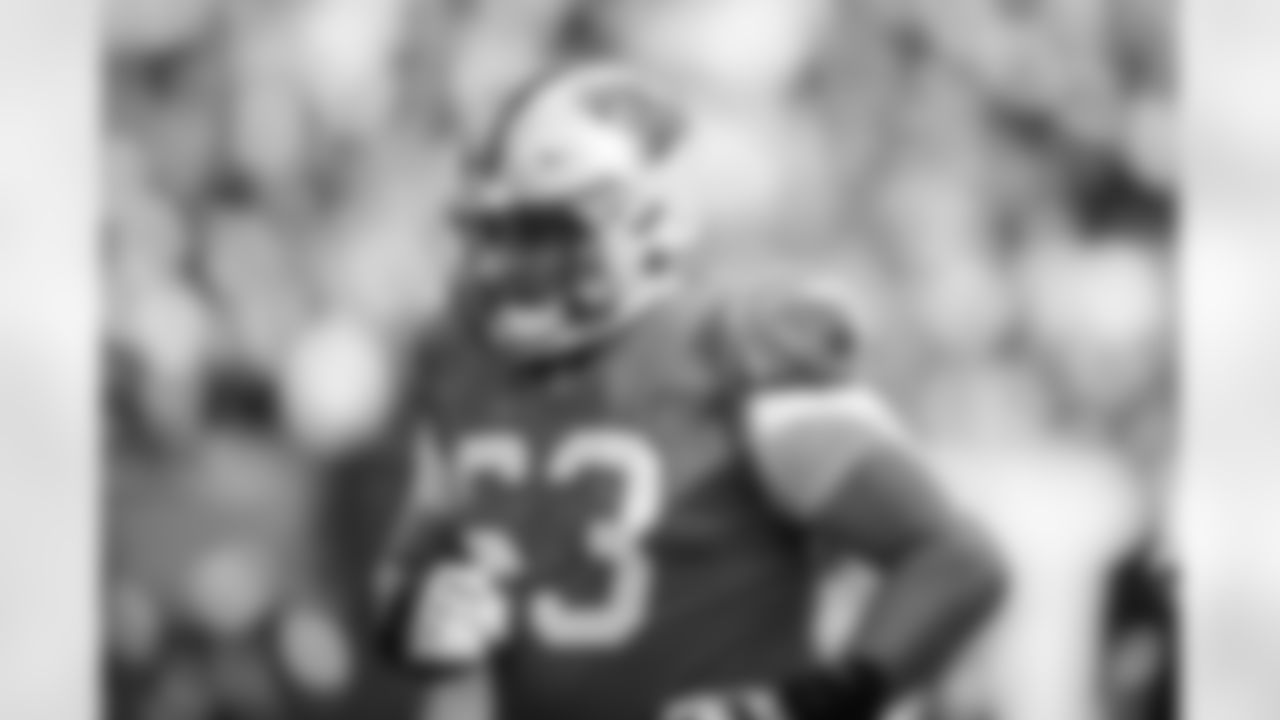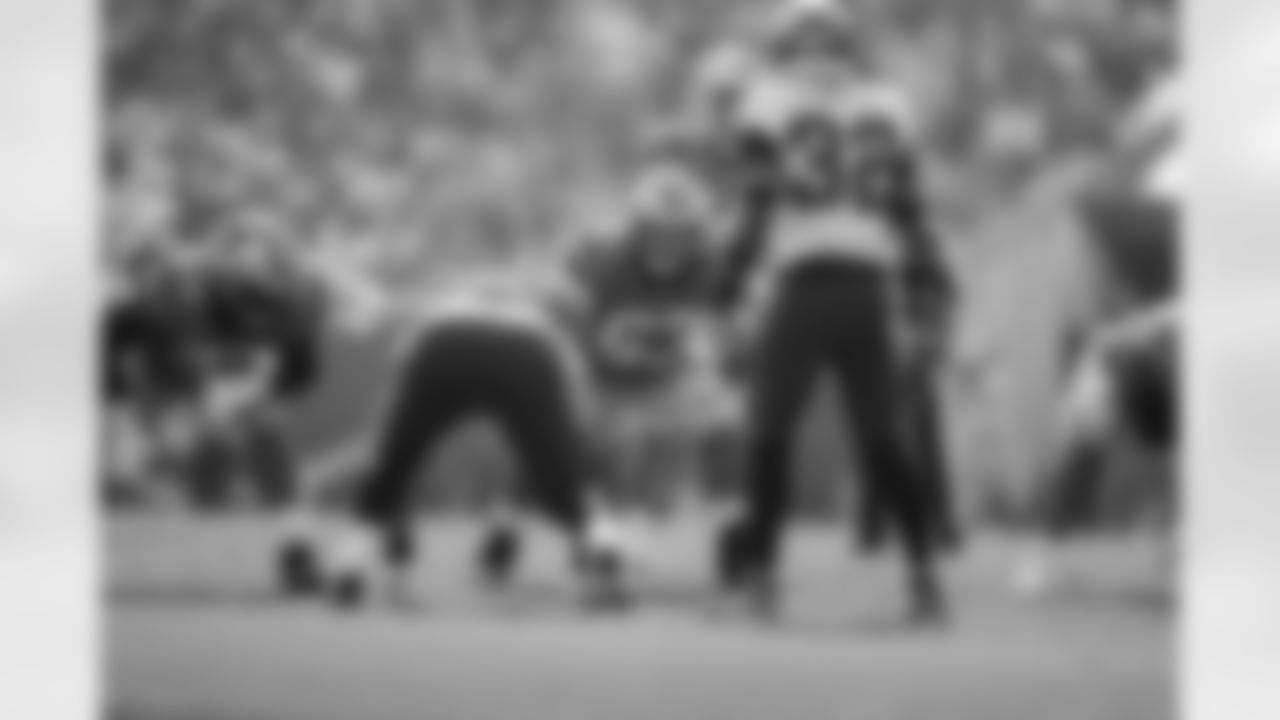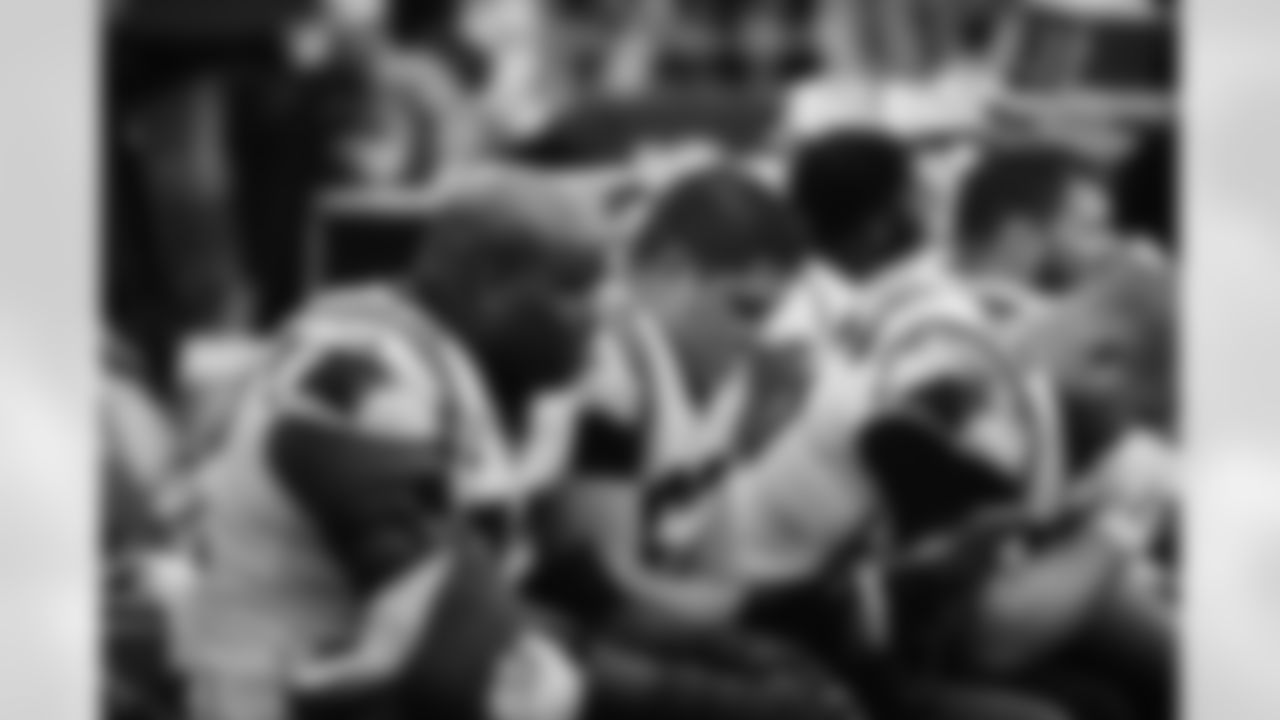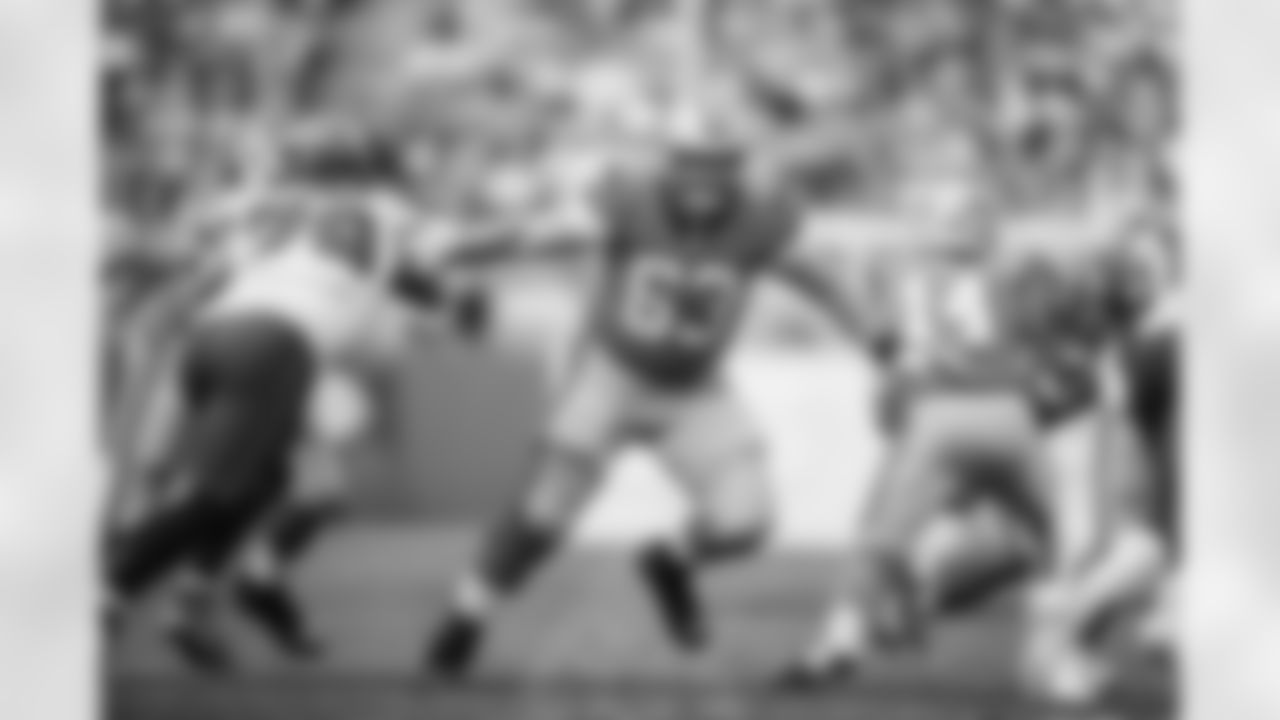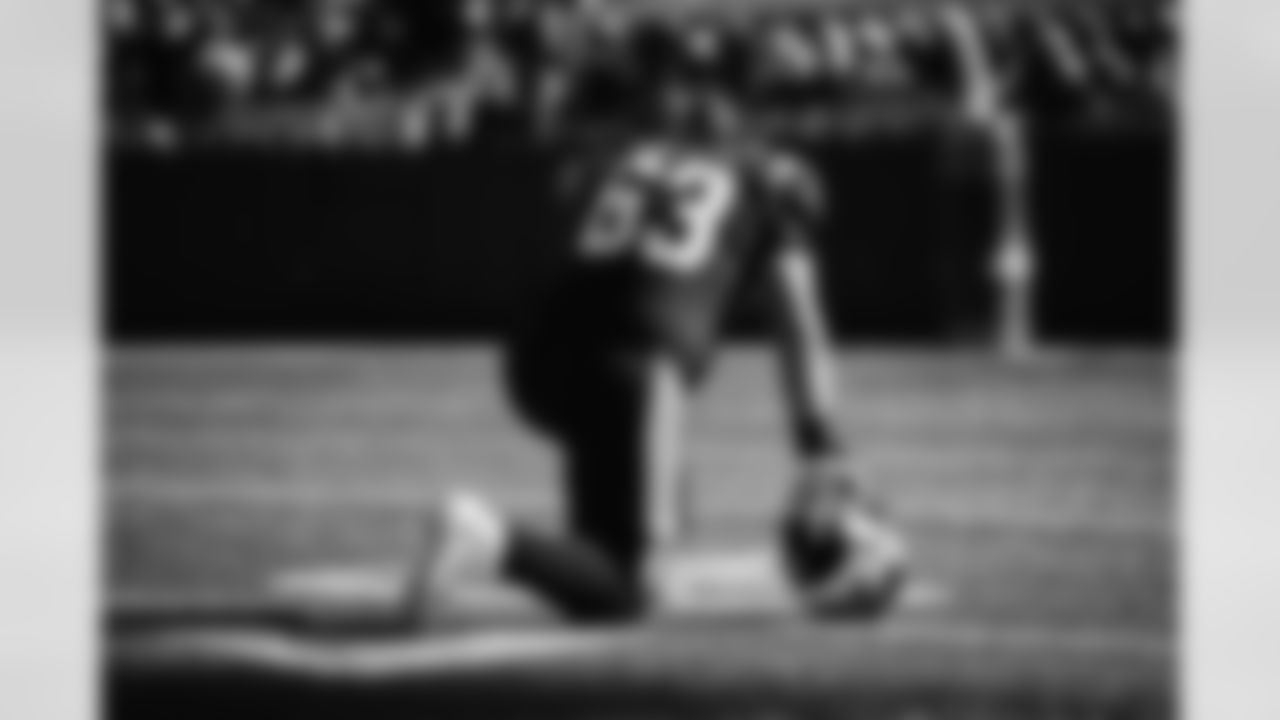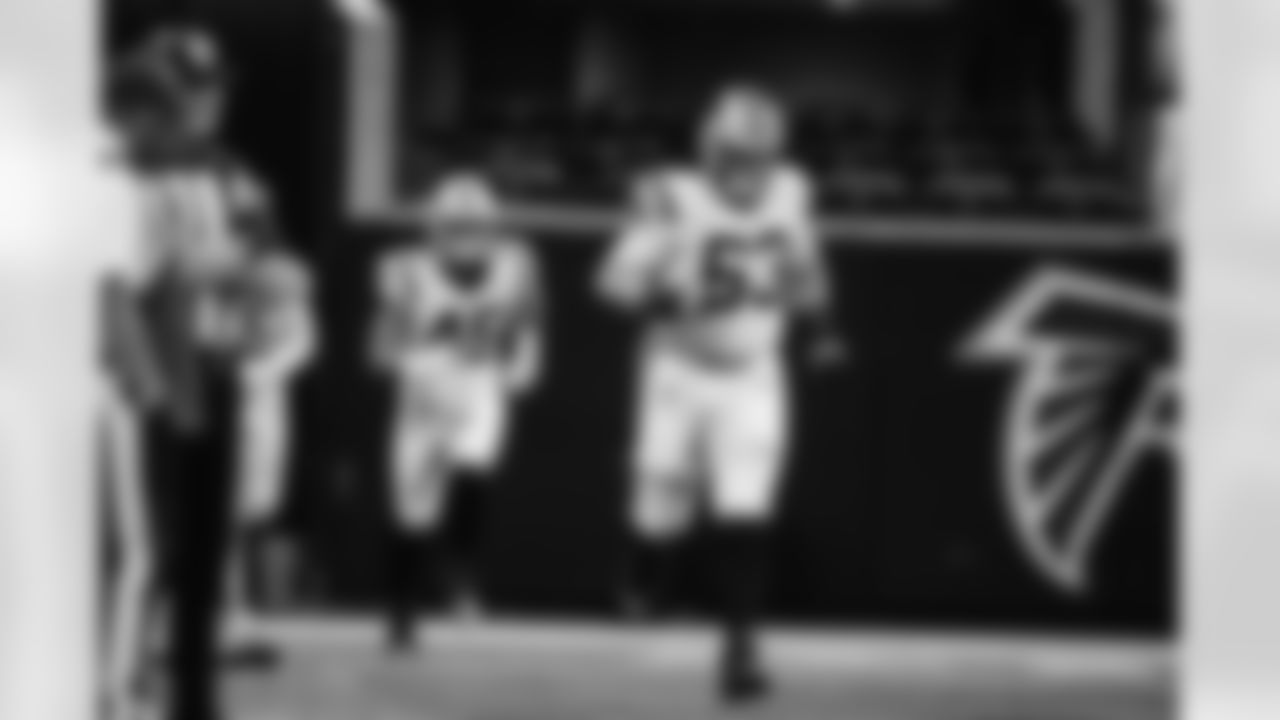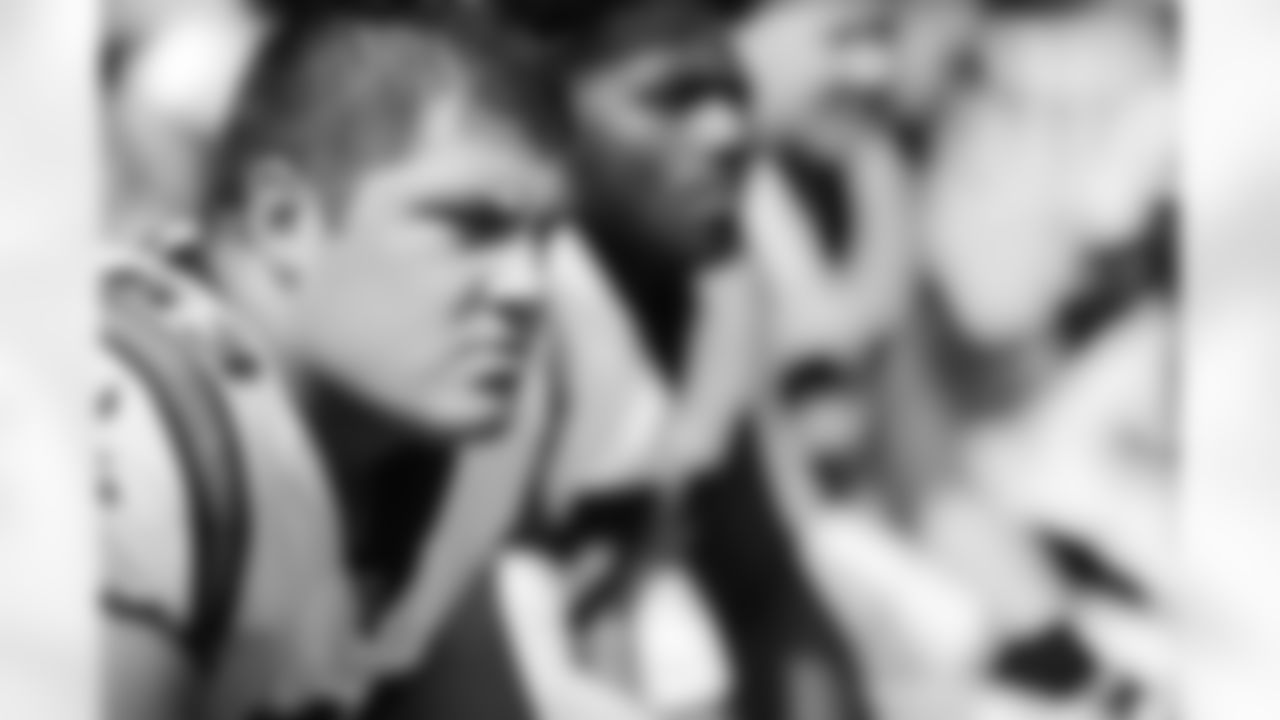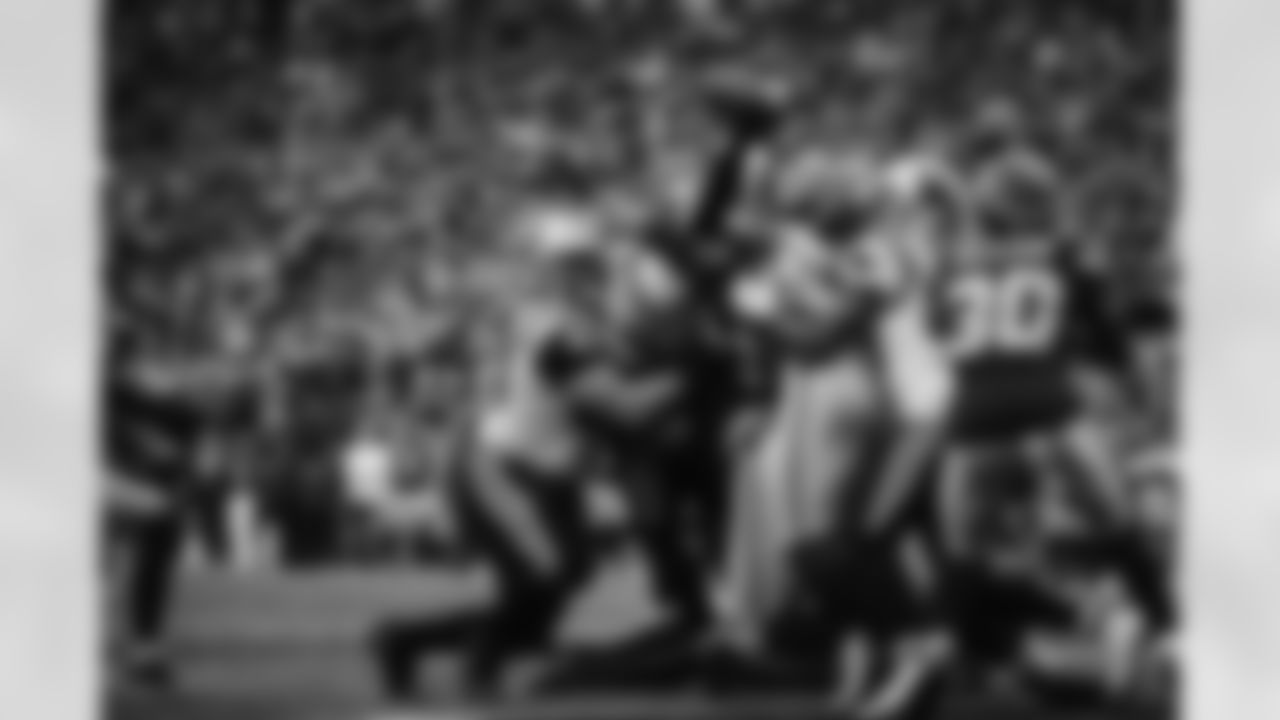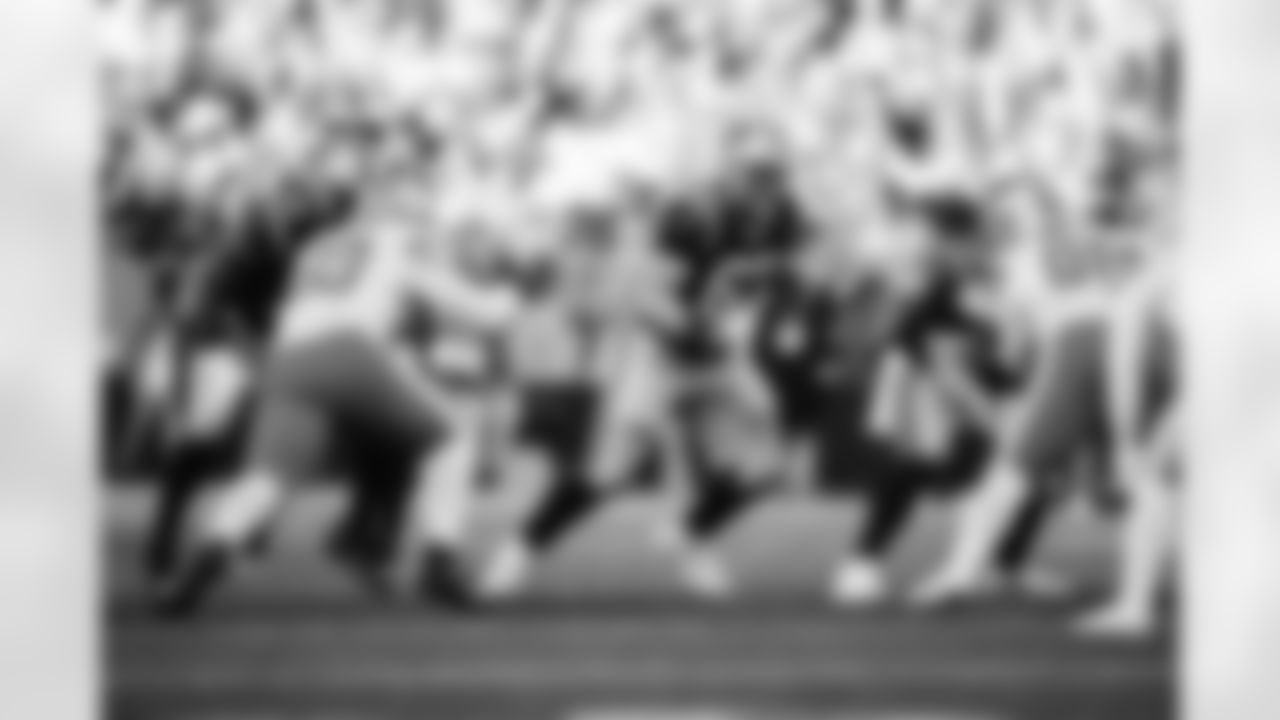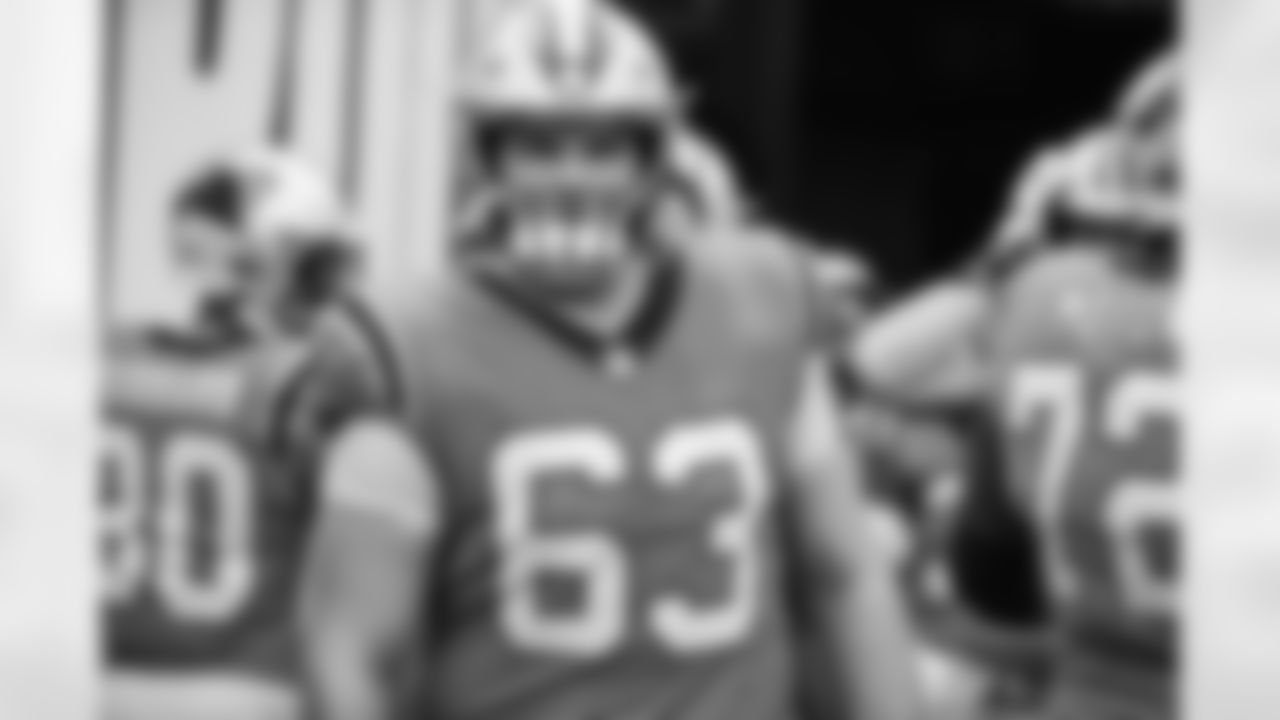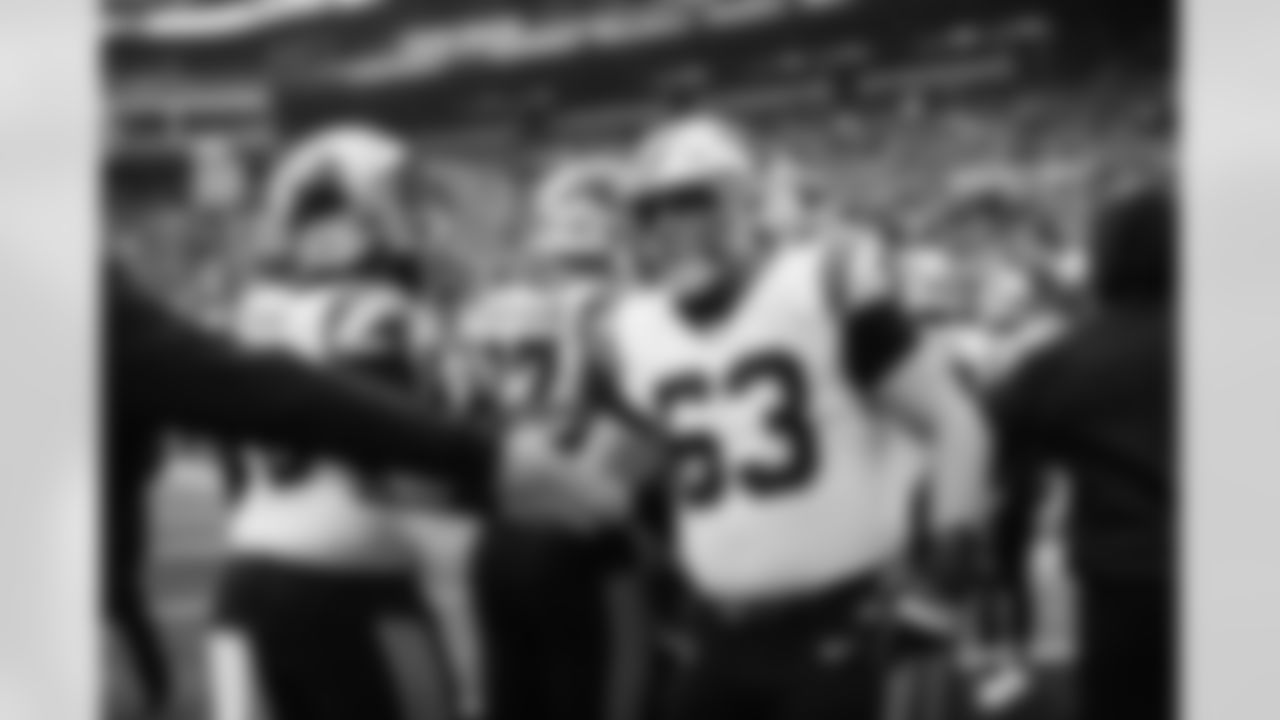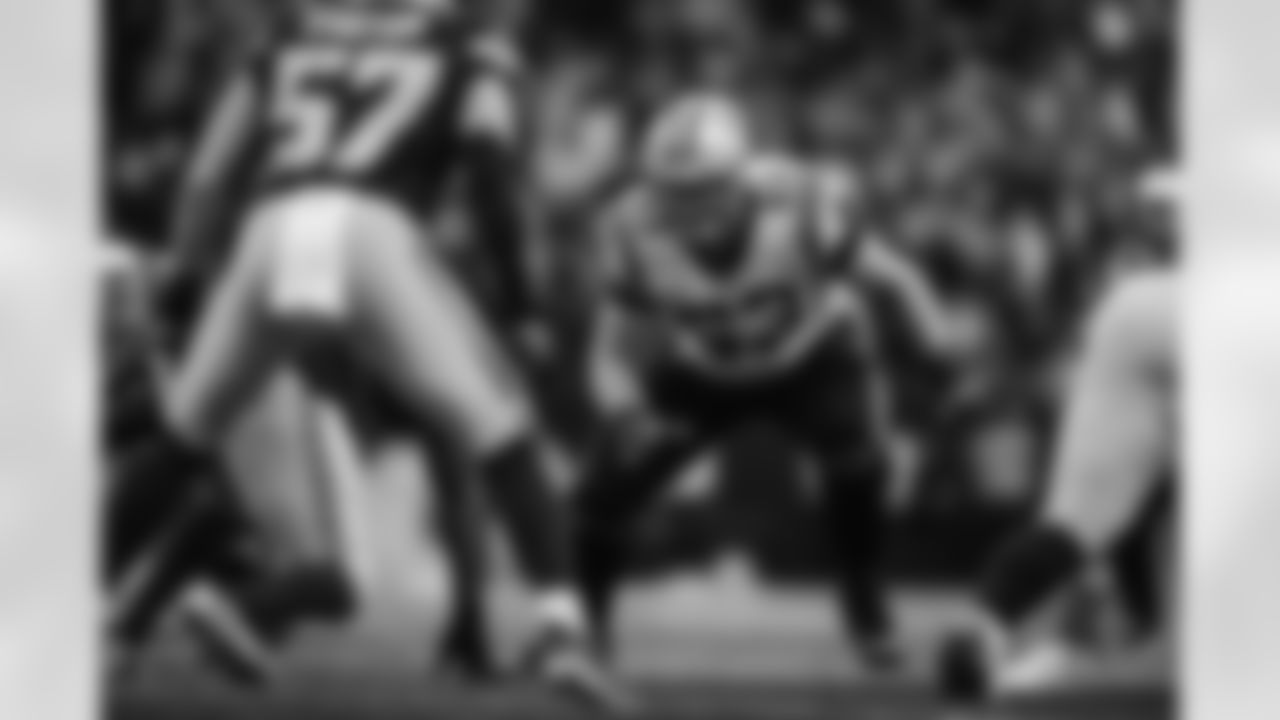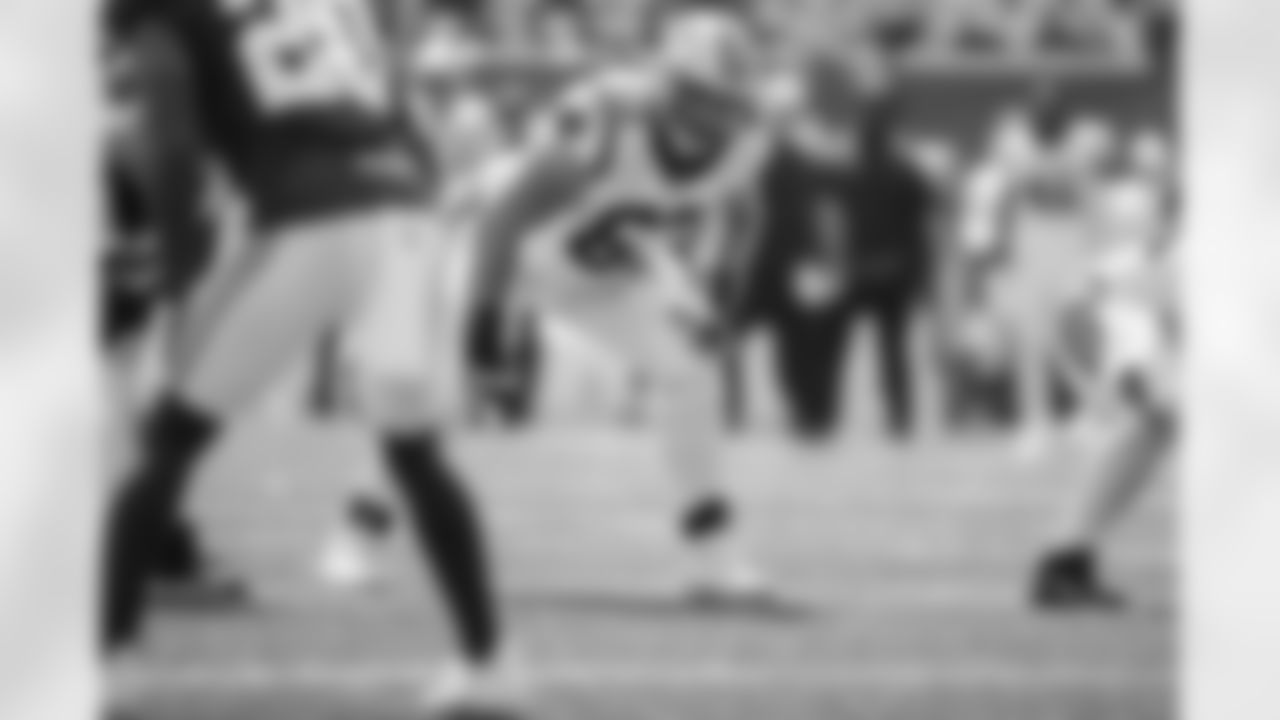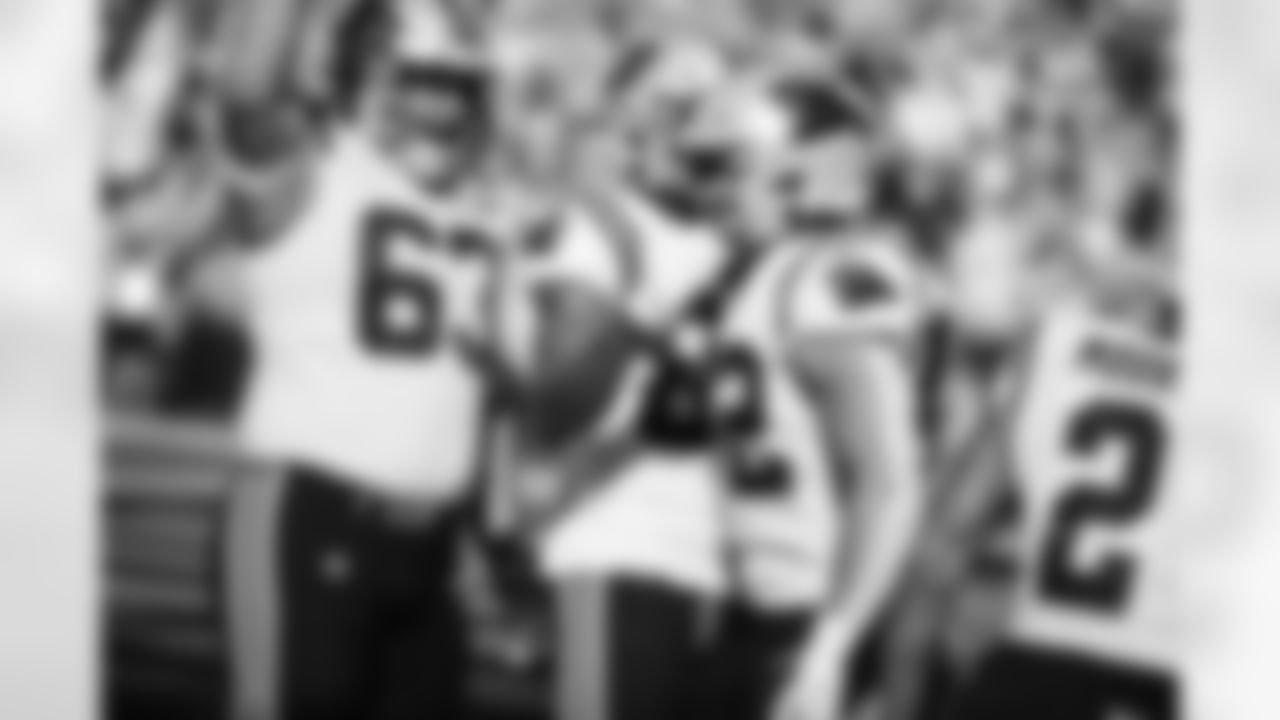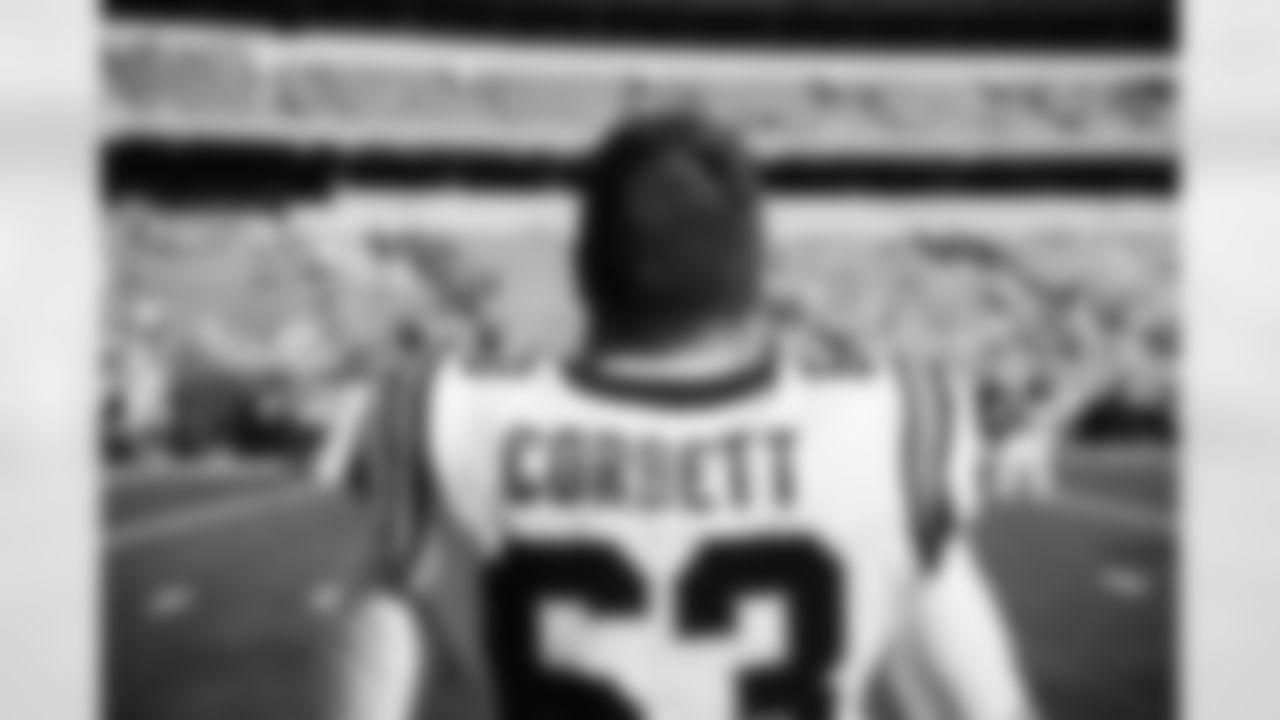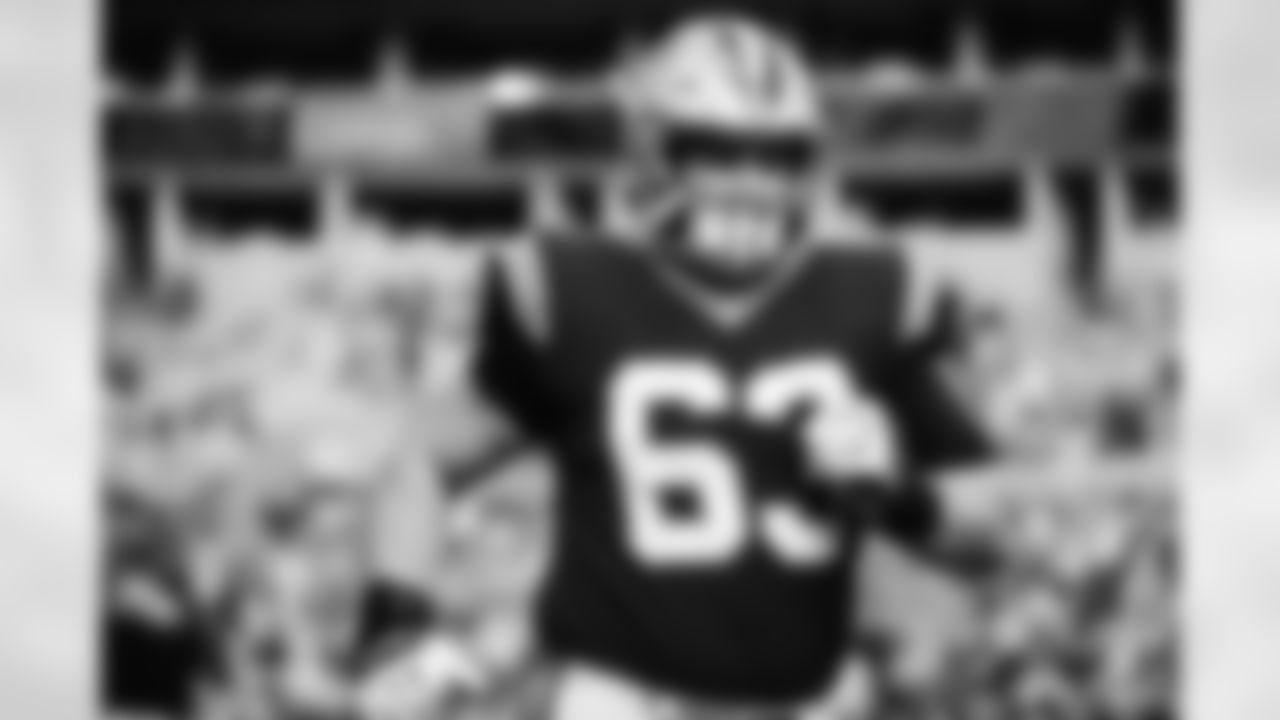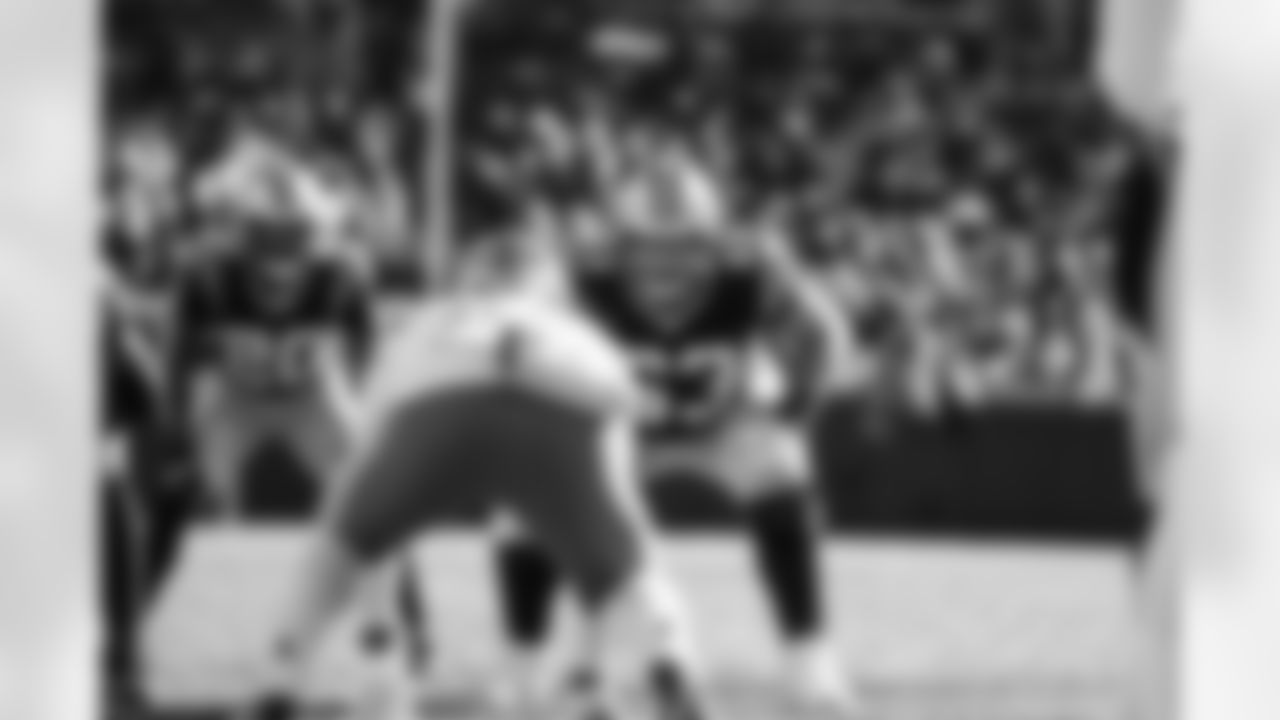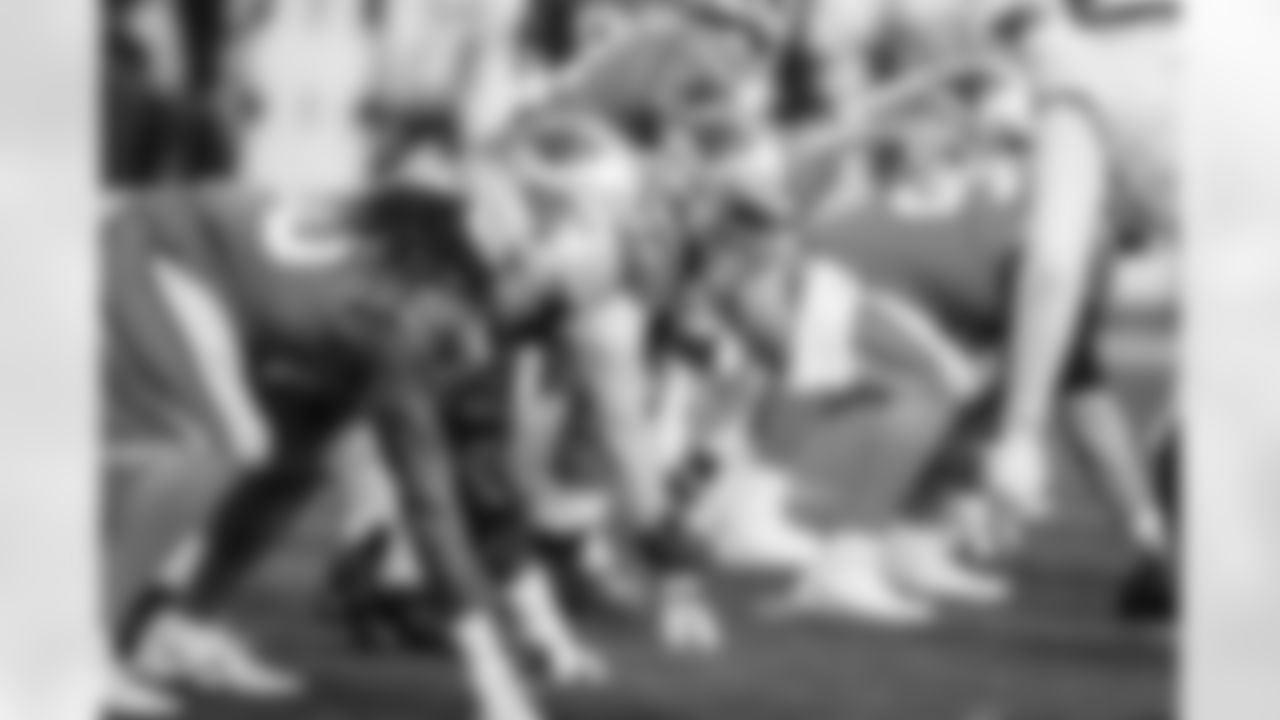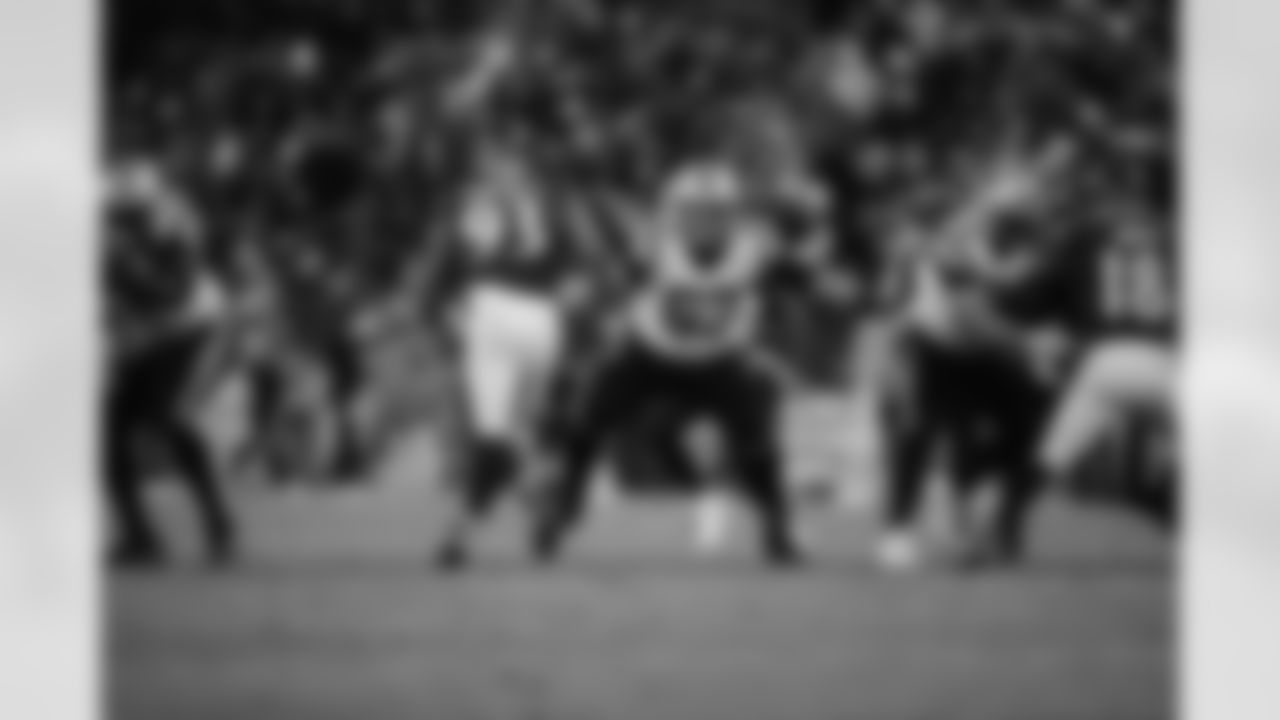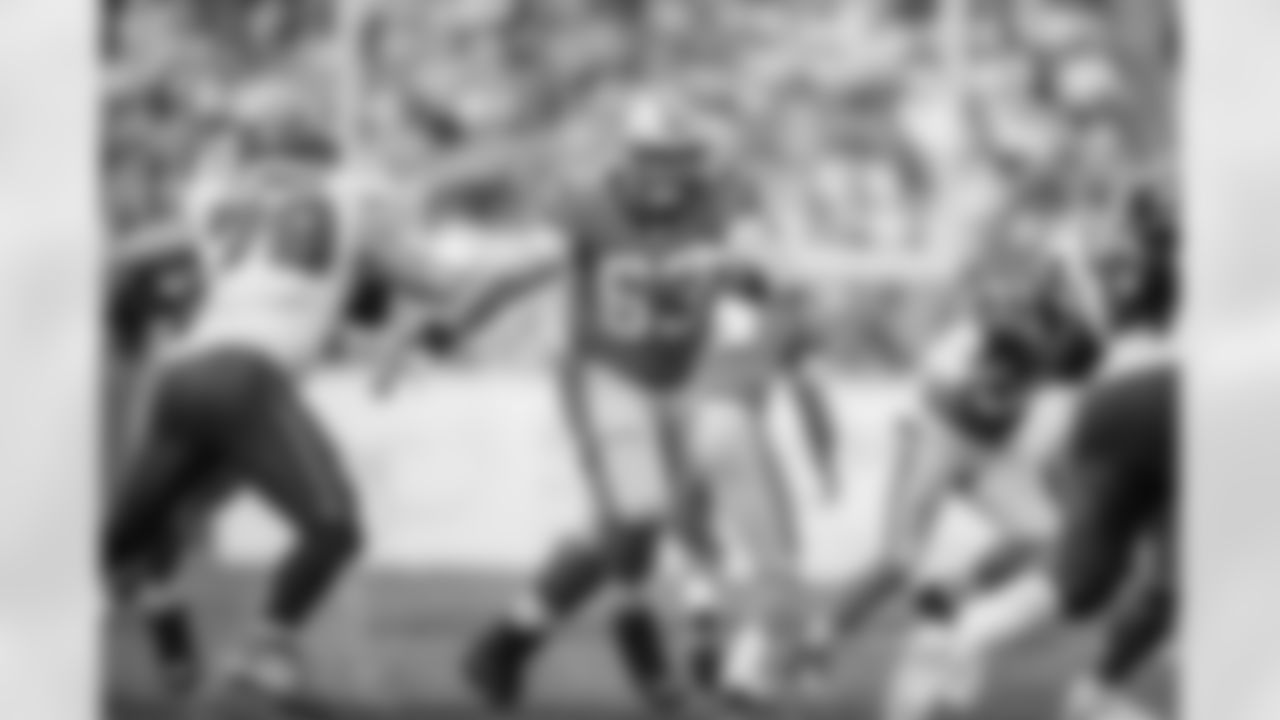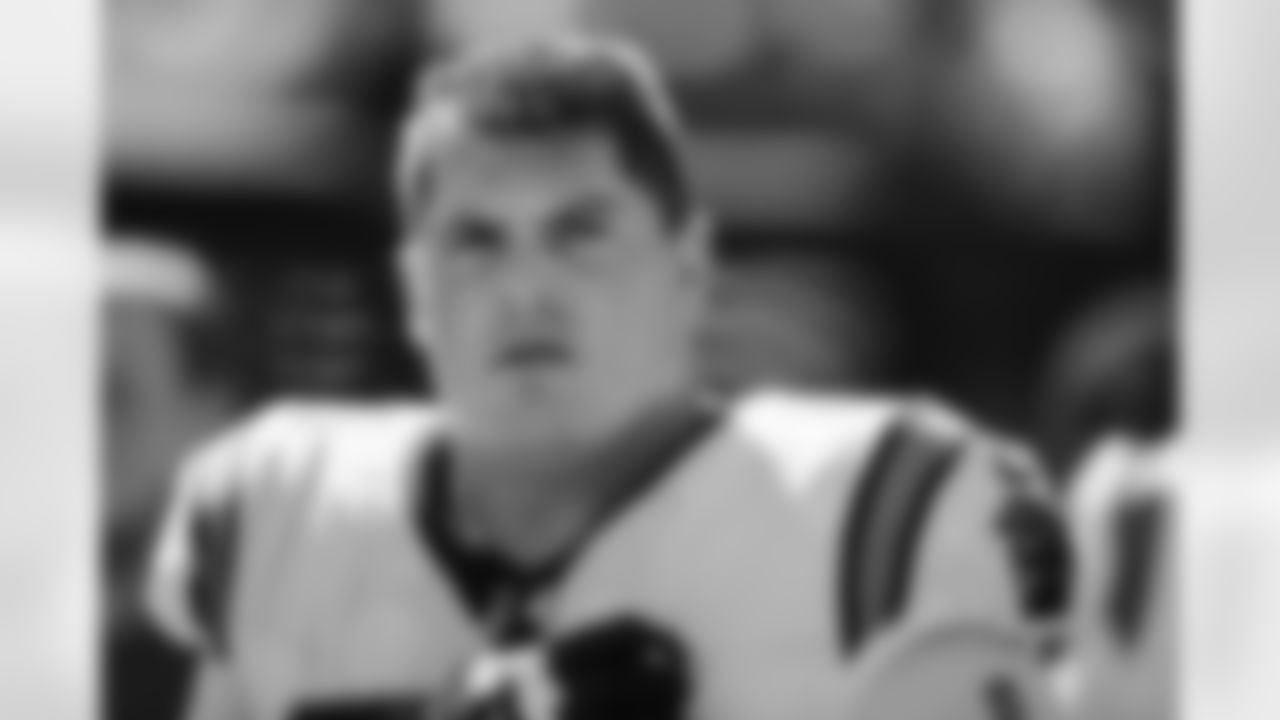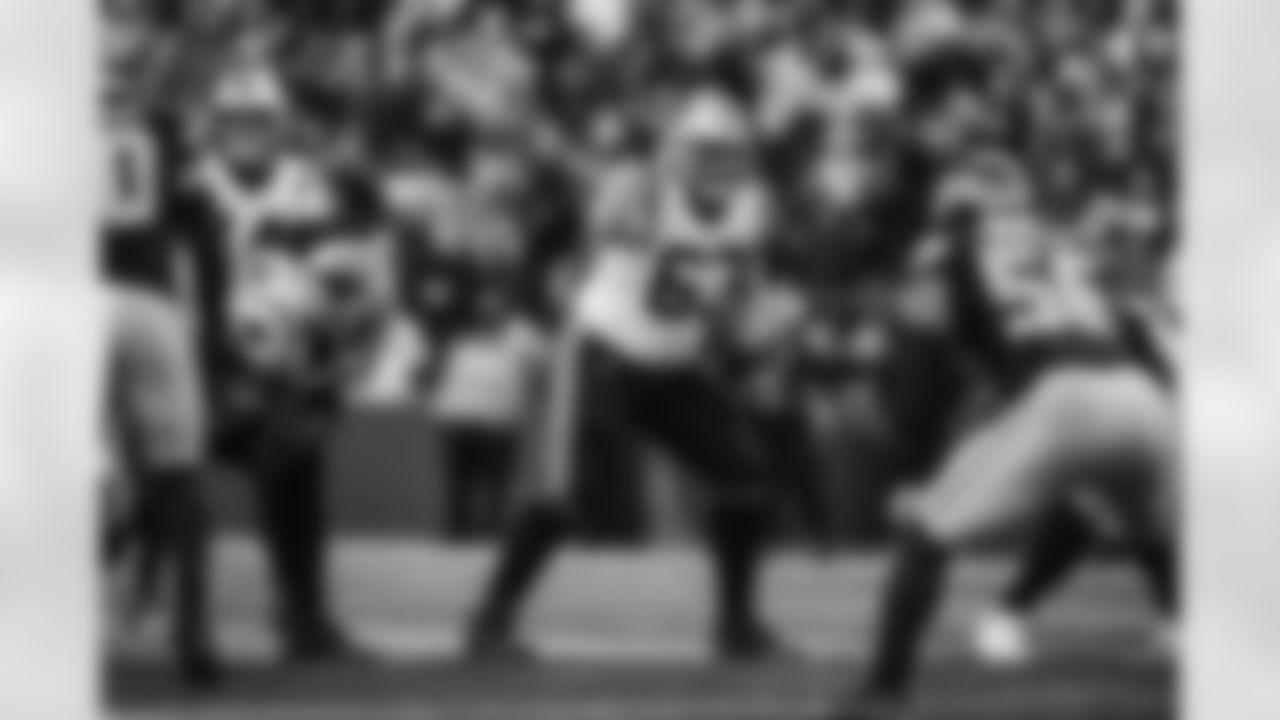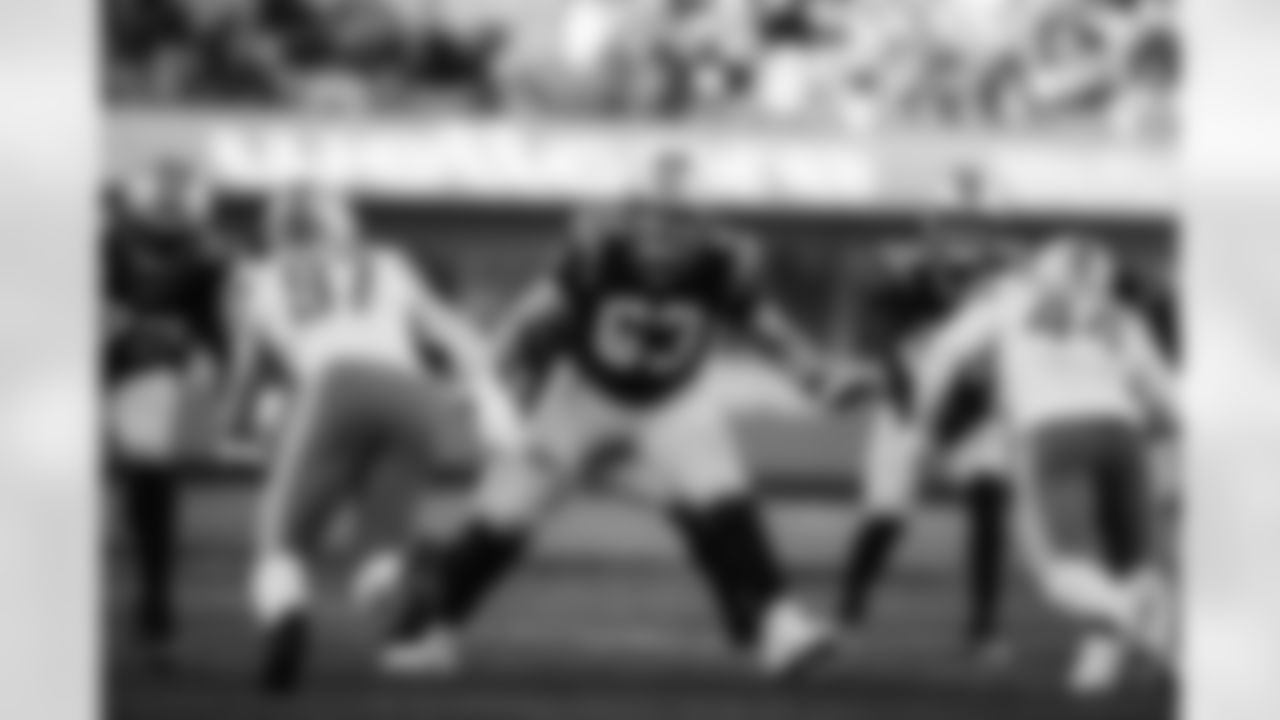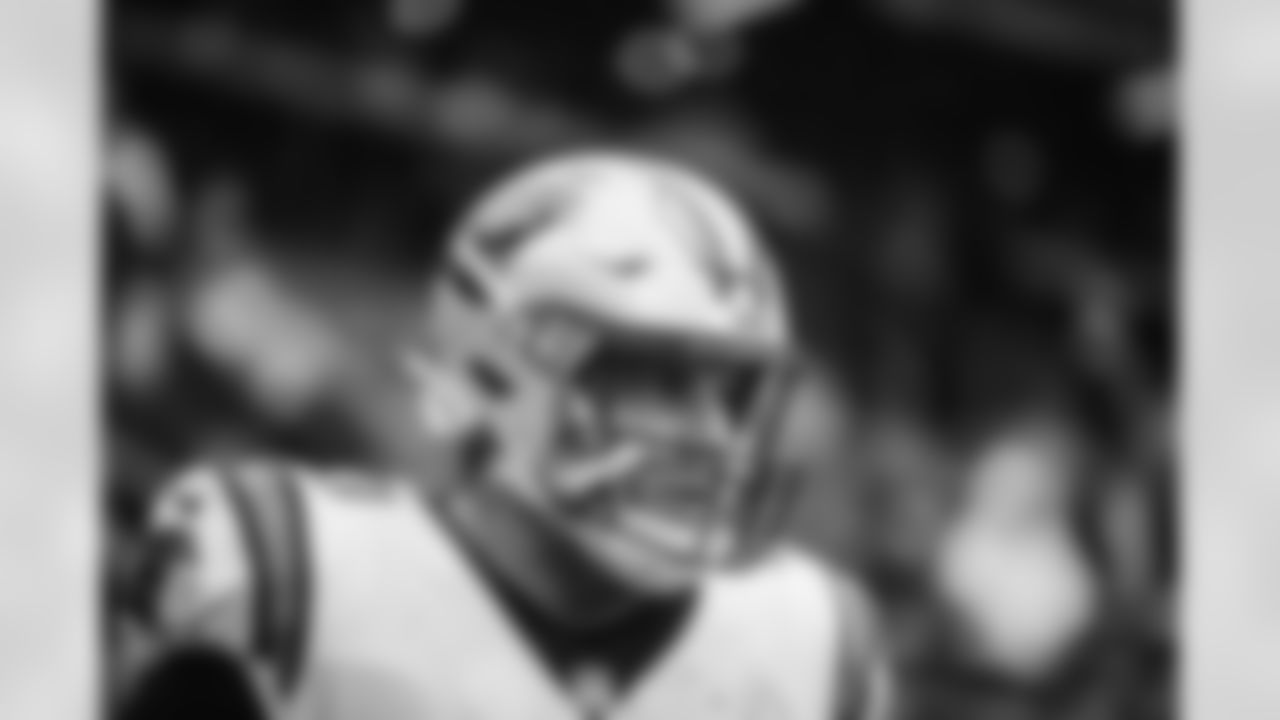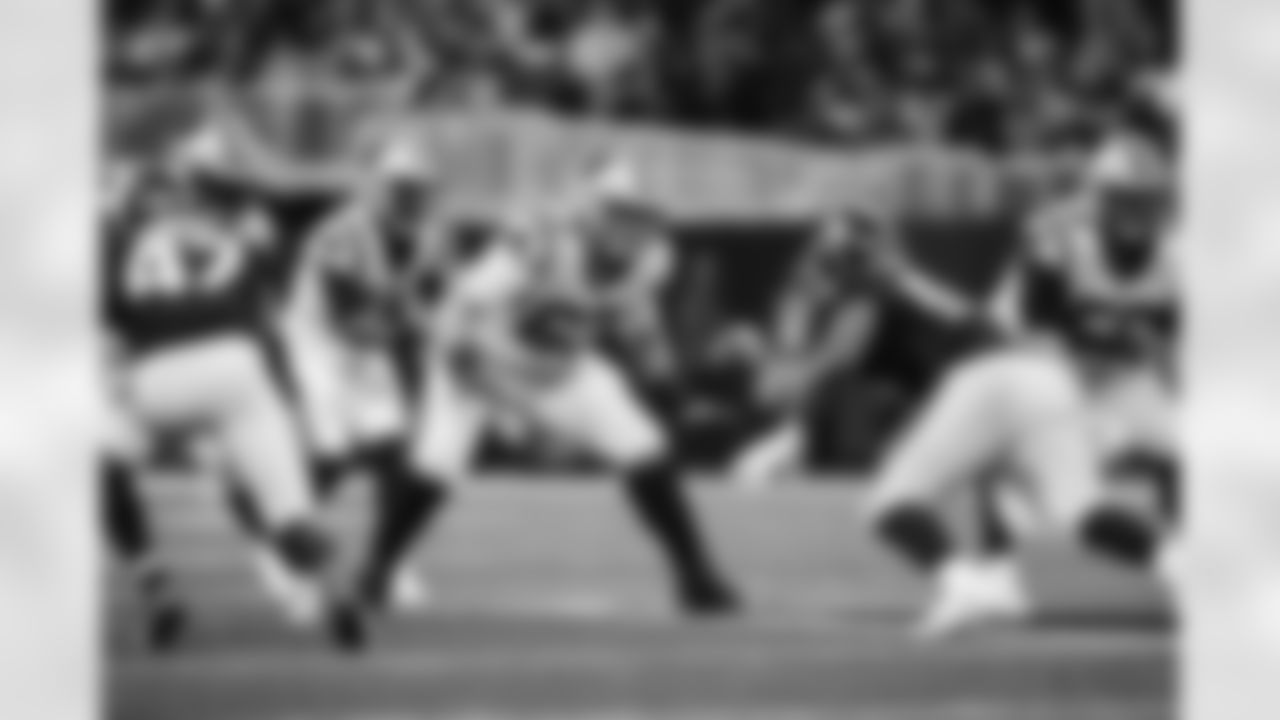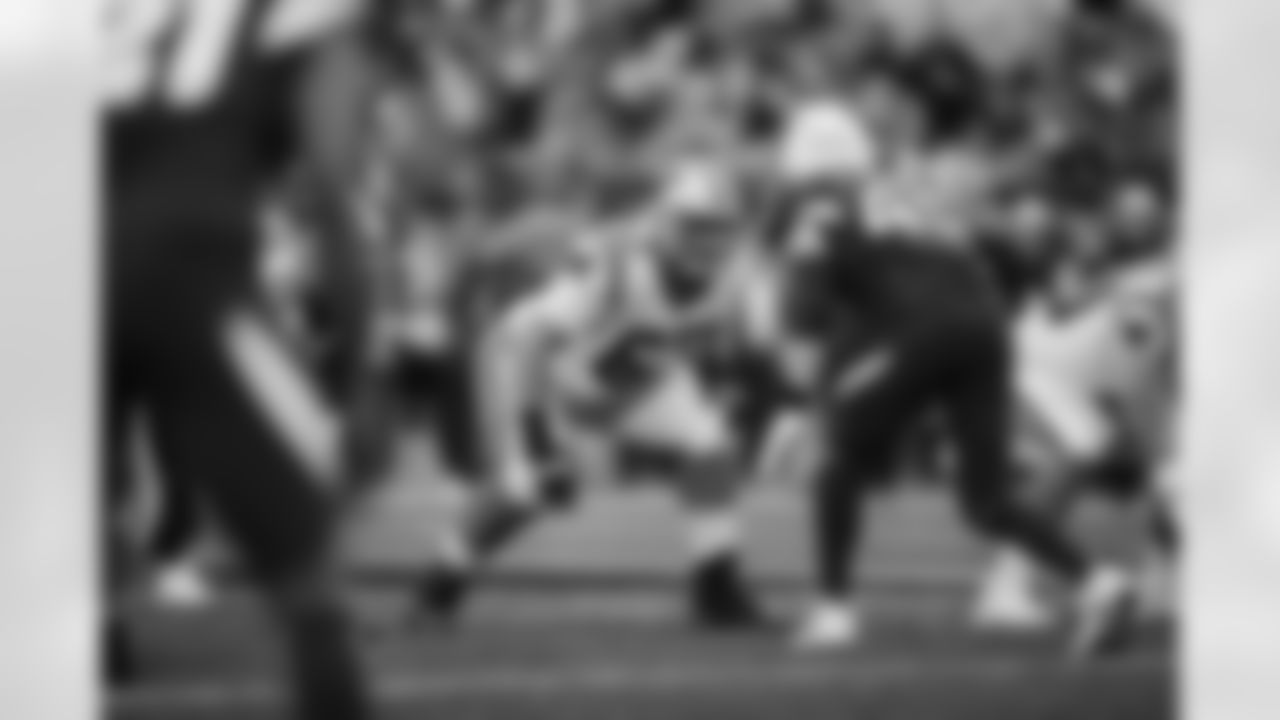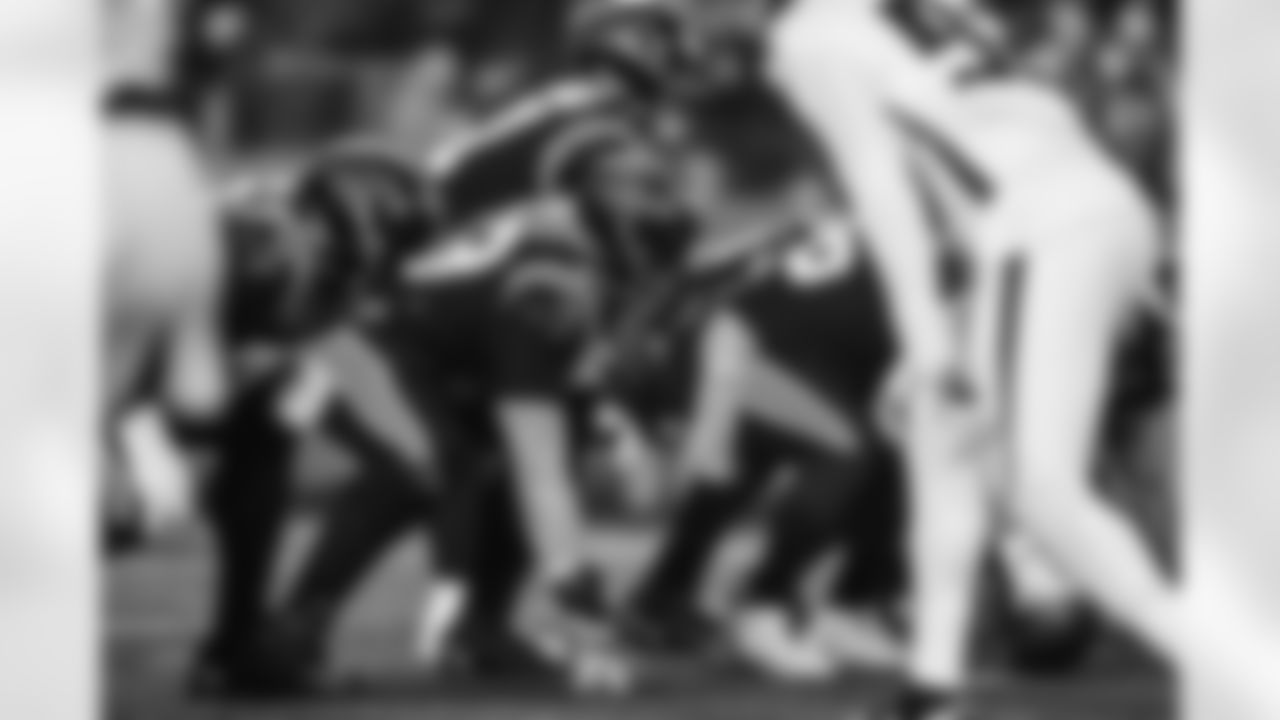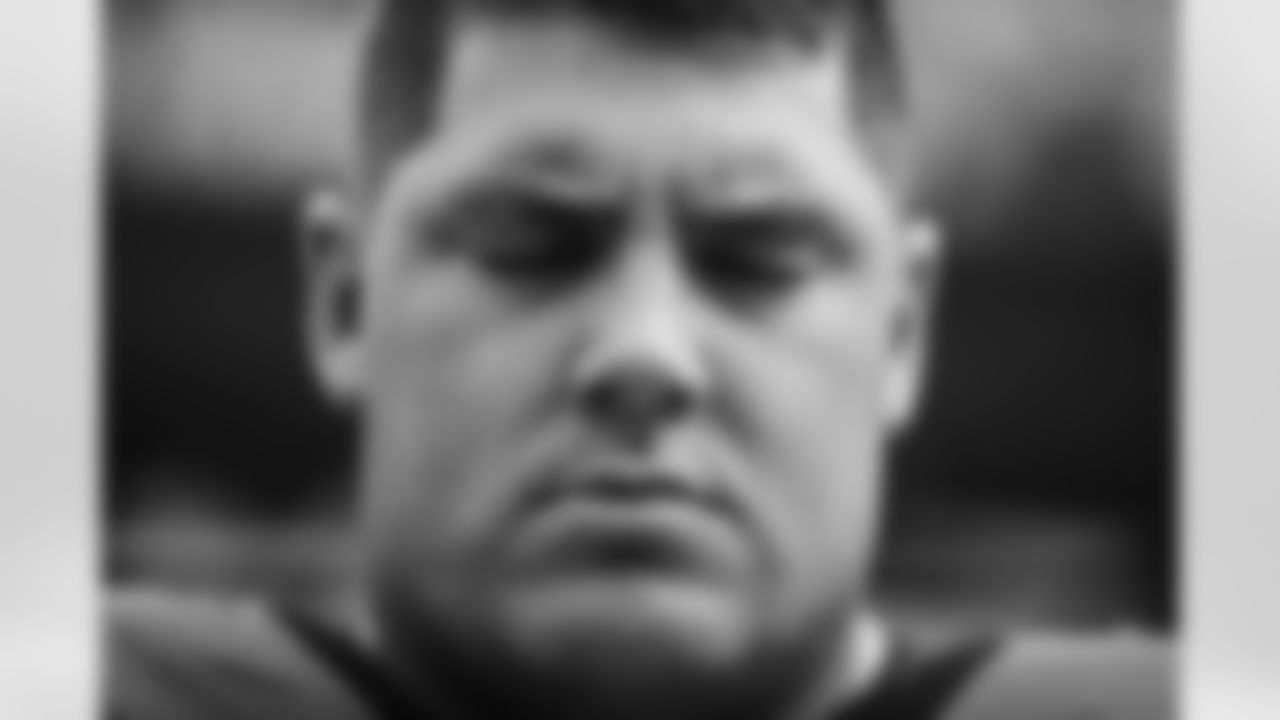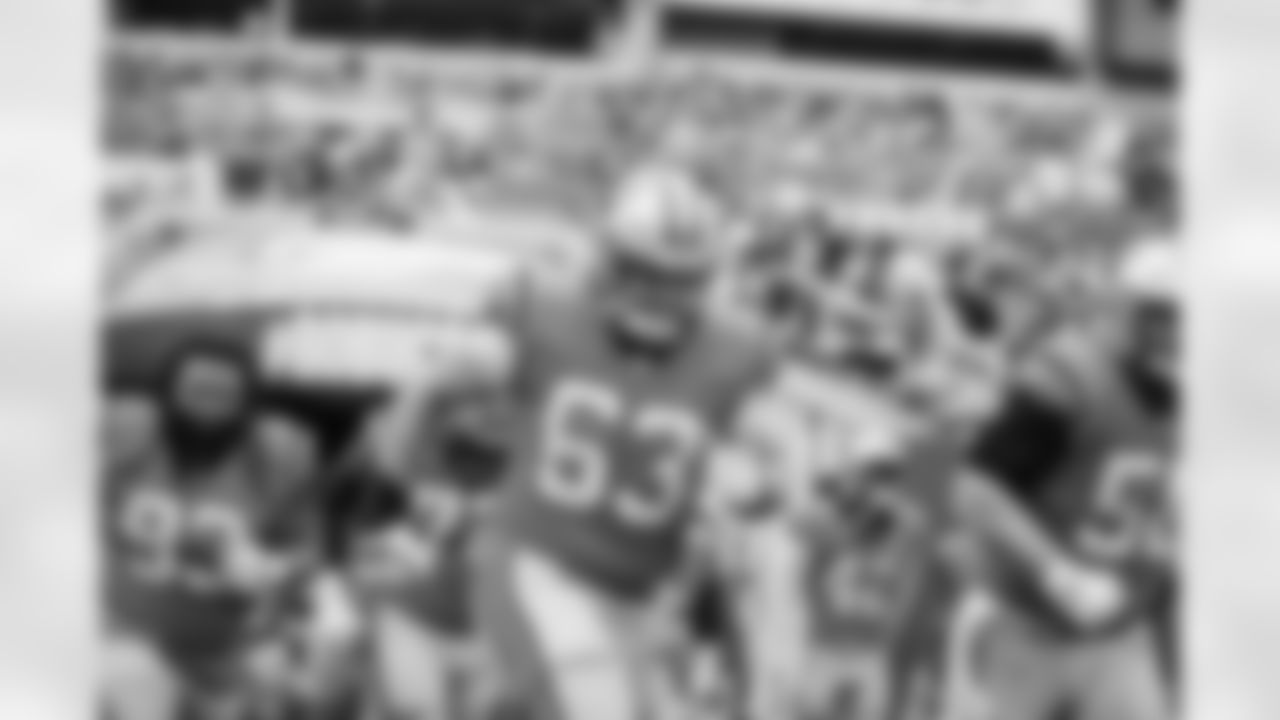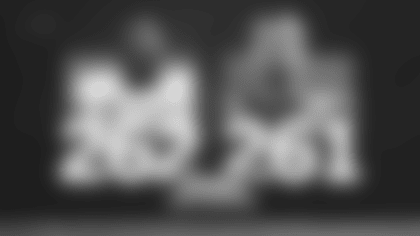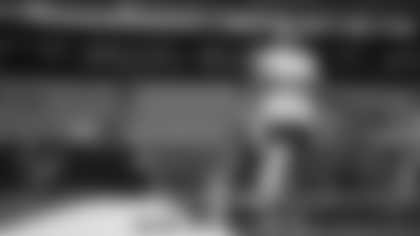Panthers right guard Austin Corbett suffered a torn left ACL on Jan. 8 in the regular season finale against the Saints. He has agreed to take us inside the rehab process, explaining his perspective on what coming back from the injury entails from a physical and an emotional standpoint and what the months of work to return actually look like as they're happening. This is his story, as it unfolds.
Read the first installment in the series here, the second month here, the third month here, and the fourth month here.
CHARLOTTE — Lifting the weights again has been fun, and Austin Corbett has logged enough time on the Peloton that he's practically qualified to wear the yellow jersey.
The problem is, all of his friends are out on the practice field wearing black and blue and white ones, and he's still unable to do as much as run in a straight line.
So one recent morning, while practice was beginning and quarterbacks were warming up, Corbett pushed a low sled with a single 45-pound plate on it around the turf of the Atrium Health Dome for a few minutes and then cooled down by walking some slow, solitary laps around the indoor field.
The look on his face said it all as he shook his head at the limitations of his current condition.
"I'll be honest with you," Corbett said with a tired sigh. "I'm kind of bored."
This is probably to be expected. He's five months out from the torn left ACL in New Orleans, which complicated his offseason. But the next big milestone for him is five months out from surgery, which means he has another 10 days to wait before he can take the next big step in his rehab.
Corbett, head athletic trainer Kevin King, and the Panthers athletic training staff had a FaceTime call this week with the surgeon who repaired his torn ACL and his meniscus, Dr. Neal ElAttrache. The numbers were presented, the files studied, and the news was good. In 10 days, Corbett will actually be cleared to run on grass again. Actual running, without the benefit of the Alter-G treadmill, which supports part of his body weight and is practically part of his wardrobe at this point.
So soon, he'll be able to run again. When you weigh 310 pounds, this isn't necessarily welcome news. But Corbett is eager to mix up his routine in any way, and doing anything different is welcome news.
"I'm an offensive lineman, right? So like, running isn't necessarily my forte in the first place," Corbett said with a laugh. "But it's something else to do and to gauge and to add some more stimulus to the knee and everything."
Then another laugh, and a shake of the head, with a hint of resignation. "So yeah, that'll be a good change."

He needs it, from the mental standpoint as much as the physical.
So far, all the stimulus for his knee has been very controlled. In the days after surgery, it was provided by machines they'd strap to his leg as he whiled away the hours in the athletic training room. Eventually, he moved up to an exercise bike and the weight-bearing treadmill. Those are significant milestones in the course of a nine-month-or-so recovery, but as he approaches the midway point of a process he hopes puts him back on the field early in the regular season, he's eager to get to the next thing.
He's tantalizingly close. He's been lifting weights with his teammates; he's in meetings with them. But in those moments he's worked for since high school, those precious practice hours, he's barely more than a bystander. He knows this is the way it has to be. That doesn't make it easier to bear.
"I love the weight room, but you've got to change it up," he said. "That's all I've been doing for the last really solid two months now. It's just to be able to do something else. And even when I'm in the bubble, during practice, I'm just pushing a sled. That's still giving me something else, right? But still."
When Corbett's spirits begin to fade, he's left to rely on the small army of people who have been with him in every step of this journey. Even though King and assistant athletic trainer Katy Rogers and physical therapist Kylan Smith, and head strength coach Jeremy Scott, and director of performance nutrition Kate Callaway, and all the dozens of people on the ground floor of Bank of America Stadium who are working with him swear he's at least on track if not ahead of schedule. At a certain point, the mental fatigue presents as much of a hurdle to overcome as the injury itself.
"We have to keep reminding him," King said. "You know, you're OK where you are right now. You're where you need to be."

Of course, the news from Dr. ElAttrache that he could begin running in a straight line again this month provides that boost, that next step. But it also means he has to start running again, and his recovery hits another phase.
As much as he can't wait, he also knows his exertion level is going to go up as well.
"Now, when he starts running, he goes into another phase," King said. "Straight into that functional phase where you can do your job. Even when you can just do those skills, they're very predictive skills. Now eventually, you have to react against another human being; that's a whole other level.
"And when you shortchange that part of the rehab, that's when you see people have issues. I think one of the bigger challenges within the performance side of sports medicine, it's just easy to get a person on a table doing these predictive exercises and controlled ranges of motion. But when you have to respond and react to those different players, that's the ultimate test."
We're months from that, but the good news, according to everyone working with Corbett, is that the numbers are showing a consistent pattern of improvement.
A month or so ago, when Corbett got back into the weight room in earnest, there were differences of 100 pounds or more in what he could do with his healthy right leg compared to the left. Scott said that at this point, Corbett's within 10 percent of the weight difference on certain machines, getting closer to evening things up.
Of course, there are other means by which they quantify that progress, with finer measurements.

The first machine you see when you walk out of King's office is a Biodex, which looks like a leg extension machine strapped to a computer and a printer. It's like the diagnostic tests they hook your car to when it gets inspected, only in this case, the thing being diagnosed is human. And the machine costs more than a lot of cars. The monitor can offer immediate feedback to the player as he works on the machine, showing each movement as a data point.
King and Rogers are patient enough to explain to laymen terms like isometric and isokinetic. And that's helpful. But what's helpful to Corbett (who studied all this in college, considering med school before he realized he was good enough at football to make a living) is the data that comes out of the machine.
So getting King talking about a Bidoex machine is like asking an offensive line coach to discuss the jumbo package with extra linemen on the field — you're in his wheelhouse now.
"It allows us to look at strength in one limb compared to another," King said. "And even look at what that looks like compared to norms. And we can track his progress over time. It's serial testing. You can look at how fast someone moves through a range of motion. And the machine can provide their different speeds of resistance, their range of motion, one limb compared to the other, all of that."
So on the days when Corbett's not feeling the same kind of validation, King and Rogers pull out the charts. If you look at the difference between two days in the same week, it might seem small. Look at the difference over the last four months, and the graph is clearly moving in the right direction.
"That is the challenge with strength," King said. "I don't see big gains day to day; even week to week can be a challenge. But what's cool about this, as you look back a month ago, you realize, 'Wow, this is where I was, and this is where I am.' So it's important to have the graphs and the historical data so that you can see how you're progressing. The serial testing has been, I think eye-opening for him and us."
They take daily measurements of his strength, and with all those numbers, they can show him proof that he's getting stronger on both sides but also that the left side is climbing faster than the right. He's not up to the power and explosive-movement stuff that's coming, but the strength numbers are moving in the right direction.
He's catching up and getting close to even. The Biodex will put it in percentage terms, but when he thinks about the physical part, he can feel it.
"Those numbers within a week might drop, like if you're tired from the previous day," Corbett said. "Or maybe it's just a little better than the previous day. But it's just that steady rise that we've seen as we've done the Biodex for over a right about a month now. Just that it's constantly going up, but you can't just look at it daily or weekly time-frame; you have to zoom out and see the overall.
"It's like the S&P 500, right? Looking close, it might drop, but these amounts are going up."
Corbett laughed and said he appreciated the attention to detail. He's created a lot of data points this offseason, and someone has to enter them. He's not pushing those keys himself.
"I'm very appreciative," he said.

Those numbers show him something he doesn't feel every day when he's taking those lonely walks, so giving him that extra motivation is essential in a long rehab.
But there are things he's able to do now that he couldn't do before.
Even when he leaves the stadium, he can tell that. He can walk the dog with the family. He can wander around the golf course he lives on and chip and putt. Dr. ElAttrache hasn't cleared him to take a full cut — which is probably wise since Corbett's golf game is power-based (he can drive his weight), so the extra work on the short game is probably helpful anyway.
He's a right-handed golfer so that left leg is the lead leg. It's not quite ready to withstand the force of a guy who has done a lot of upper-body work lately. So other than a few half-swings, that part of his game is on hold too.
"Living on a golf course seeing the golf carts go by all the time, it's really tough," Corbett said.
The possibility of playing soon is another bit of delayed gratification, another carrot dangling in front of him. Still, he's hungry for more.
At least he has some trophies for his offseason participation, and the promise of better days.
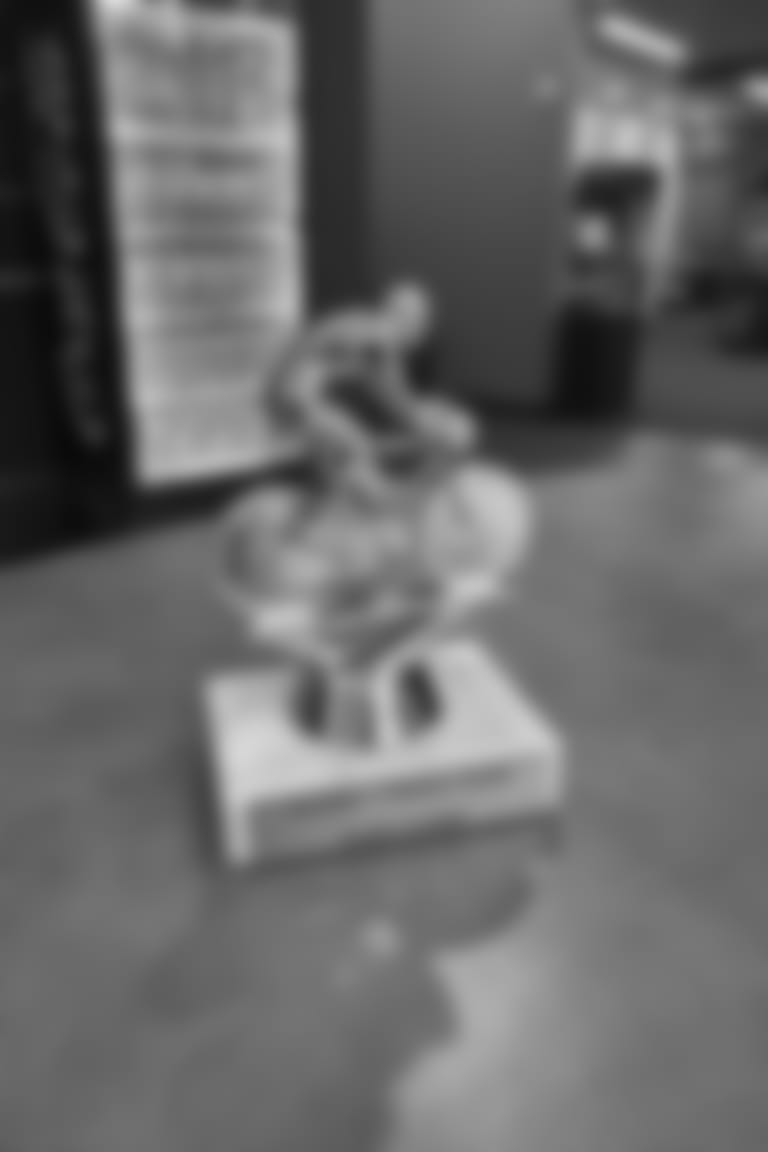
For every psychological body blow, there are moments that Corbett is hanging onto, those little things that remind him he's making progress.
The other small victory of late has been another one people might not necessarily expect — Pilates classes.
While it might be perceived as some kind of exercise class for soccer moms, Corbett gets downright evangelical when talking about his chances to go to BK Pilates in South End. Maybe it's because it's another new stimulus, and he'll take every one of those he can get, but the ability to do a new thing a few times a week is buoying.
"That's a big one," Corbett said. "And if you've never done Pilates, if you don't know, you might just kind of blow it off. But when you go into a class, your core and your hips just get cooked, fried. Just trying to reopen everything that just completely locked itself up on me for not moving for four months. And just being in some isolated positions, to isolate some smaller muscle groups that you don't really get the opportunity to do and really focus on just true core stabilization and mobility.
"And so I've been going to those for a few weeks now, and that's been awesome. Like so many people haven't done Pilates, and they're just like, oh, it's like yoga. No, it's tougher. Pilates like kicks your butt. It's just 45 minutes of your core being on fire. Just getting yourself in funky positions and being able to stay stable throughout that movement is what we look for."
It's not football.
Heck, it's not even running.
But when you contrast the grin that creeps across his face when he talks about a group exercise class to the dour face he made as he trudged slowly around the perimeter of a practice field, the difference is clear.
There's light coming, just a few weeks away. Some days, it's hard to see.
He knows he has miles to go in this rehab, he's known that from the start.
But in a few weeks, he can start putting miles on something other than a Peloton, and then he'll start feeling more like himself again.
View the best photos of Austin Corbett who started every game at guard in his first year as a Panther in 2022.
